
views

Map out your demographic. Music radio listeners are typically seen as aged 25 to 54. Decide whether your target demographic listens to country, pop, sports, classical or any other style of radio. If the demographic that you are aiming to market to is not between the ages of 25 to 54 or they do not typically listen to music, sports radio, news radio, public radio or another popular type of radio promotion, then radio may not be the best option for your promotional campaign. Consider TV, print or other ads that may cater to your target market.
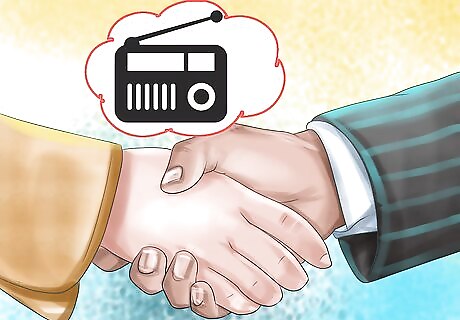
Appoint someone who is experienced with marketing to lead the radio promotion campaign. It is helpful if the person is a radio fan, because they will know local radio disc jockeys (DJs), radio stations and the peak listening hours. Planning a radio promotion takes some time, so this person should have 5 to 20 hours to devote to the project.

Establish your budget. The budget will depend upon the size of the event/business, the promotional needs and past experience with radio promotions. Generally, a radio promotion will not be very successful if the budget is under a couple hundred dollars for each station, but it can also run up in the thousands. If you are trying to establish a complete promotion budget, make sure to diversify. Do not spend all of your money on radio promotion; instead, consider print, television, Internet, coupons and more along with radio promotion.
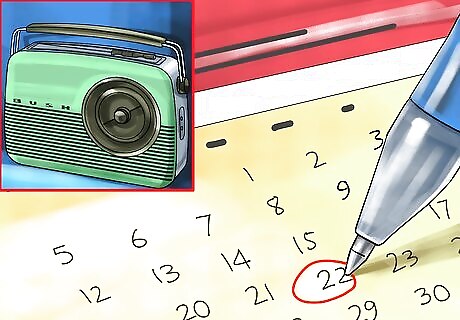
Choose a time frame for your radio advertisements. For example, if you are spreading the word about an event, you may want to have all the ads within 7 to 12 days before the event. If you are spreading the word about a new business, you may want to have a month to 12-week plan to get the word out over your coverage area.

Decide how far you want your radio promotion to reach. Each radio station has a different coverage area, so choosing where you want to advertise in advance will allow you to narrow down a list of radio stations to those that fit your coverage area criteria.

Create a short press release. By writing a 1 page promotional press release you can send it to radio stations to review your business, music or event. This can also be sent to other media outlets.

Contact radio stations that fit your target market. Send your press release and an inquiry about the promotional packages that each station is running. Inquire about the coverage area, the times that promotions would run and any non-profit or bulk rates.
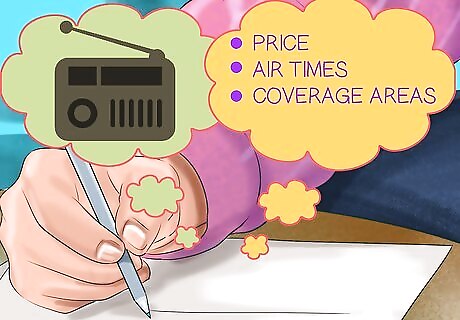
Make a list or spreadsheet of the radio stations you contact. Evaluate them based on price, frequency, number of promotions offered, air times, coverage areas and other promotions they offer, such as a talk radio appearance of contest. You can gather most radio station emails and phone numbers by doing online research. Phone calls to radio advertising departments will usually yield more immediate information.
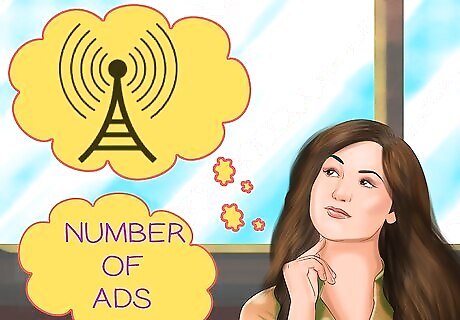
Choose your radio stations and the number of ads you are buying. Depending upon your budget and your coverage area, you should choose at least 2 radio stations or up to a dozen at once. If your promotion is not time sensitive, you may choose to do 1 at a time to review the results; however, if it is an event, an opening or a sale, you will want to time your promotions so that they run at the same time, before the event, on each station.
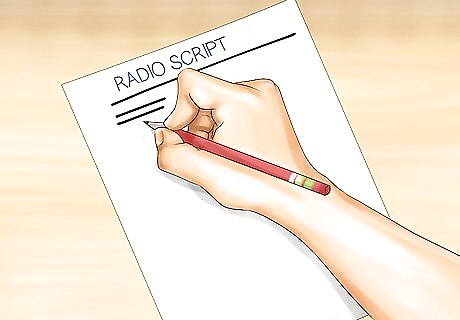
Create your radio script. One of the advantages of advertising with radio is that many of the production costs for the average advertisement are included in your price. There are some exceptions to this rule, and your script will differ based on the product you are promoting. If you are promoting an artist or an album, make sure you have radio-quality tracks prepared before you approach radio stations. The promotion may simply be playing a song, with a few details about the album and artist. If you are promoting an event, write 30 second ads that feature music from featured artists. Write the script so that the most important information is given in the first 10 seconds. Time yourself speaking the ad and write out a timed script to give to the radio station. You may also submit the important information and ask the radio to create your advertisement; however, you will have less control than if you write the script. Include 1 call to action in your script. Instead of including your telephone number, website and email, give 1 method of communication, such as an easy to remember website. Give the listeners a reason to visit, such as a discount, coupon or free merchandise.

Ask to review your advertisement before it goes live. Double check it to ensure it is clear and to the point. Give your final go-ahead to each radio station.
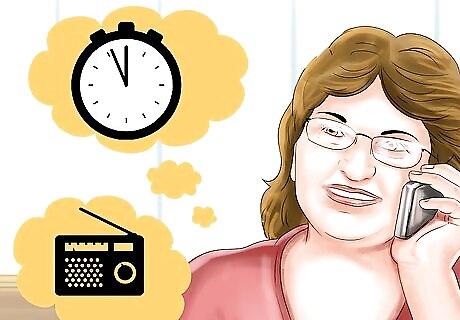
Ask for a schedule of ad placement, so that you can ensure the radio station is airing your promotions during peak times. Ask for commuter time placement, if possible.
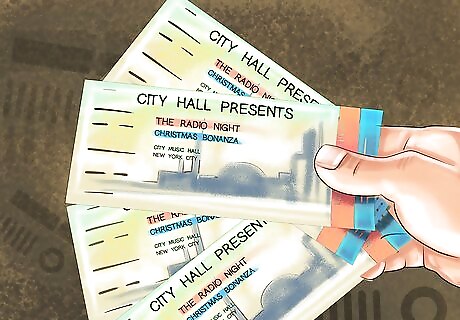
Arrange for tickets or products to be given as part of a radio show or radio station contest. Make sure they agree to promote your event or product in conjunction with this contest. Also, arrange for on-air appearances, if applicable.

Track your radio promotion results. Make sure you use unique coupon codes or tell sales associates to keep track of the number of times the radio ad was mentioned. Gather the information every 2 weeks to determine the best radio station results and those that had low value. Try to monetize the value of the ad by calculating your Return on Investment (ROI). For example, add the number of people that visited your site the week (or month) that were a result of the ad. Then, add the total sales that were received from those people. Subtract the cost of the investment from the total sales from the promotion. Divide this number, the return, by the cost of the ad. Use this ratio or turn it into a percentage to express how much money was gained for every dollar spent.


















Comments
0 comment